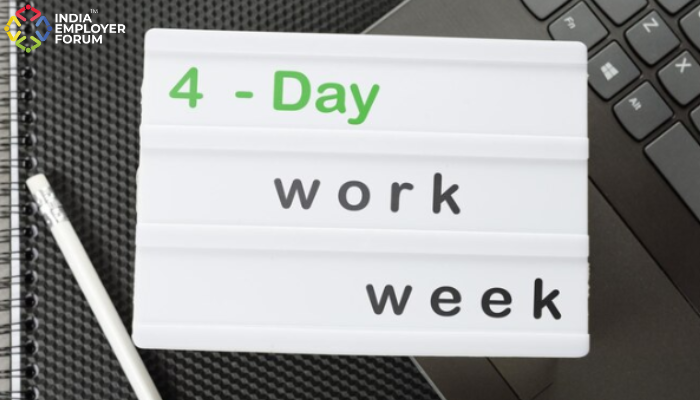Fortune magazine’s report in May 2019 that 33 large corporations are headed by women is a stark reminder of gender inequality in the workplace. That we are still celebrating something which should be treated quite normal in an ideal workplace is a cause for concern. Workplace culture still poses enormous challenges to women who want to make a bid for leadership roles. It is true that more and more women with good education and great skill set are entering the workforce now. They are ambitious and want to advance rapidly in their career too. But somehow they lose momentum and there remain very few women in leadership roles worldwide. What happens to all these bright sparks? Companies are interested in finding answers to these questions as they miss out on good quality human resource when women drop out of the workforce. Employers are interested in gender empowerment measures and concentrating on a work culture where women leaders can grow.
Companies are showing interest in finding out all that hinders the career path of capable women professionals and are keen to find solutions. One of the major concerns for a woman professional is to find at least a semblance of work-life balance. Although it is important for men as well, work-life balance becomes crucial for women. Experts believe that work-life balance does not mean that family, personal time and work should get equal time at all times. It must change according to the current needs. If at a point in time, health needs looking after, one must pay attention to it and spend more time on it. At another time, if work needs more attention, one must spend more time on it , even at the cost of cutting down on personal time and family time. So work-life balance is a dynamic thing and requires to be juggled as per needs. Companies need to acknowledge this and allow employees to adjust their time in the most appropriate manner if they need to have good gender schemes in place.
You might also be interested to read: The Future Of Work Is Here And Now
Another issue that causes a lot of women to lose out on leadership roles is : their inability to move or relocate for jobs. Women show great adaptability at work, they are also great at coming out of their comfort zone and try out challenging assignments but are reluctant when they are presented with opportunities that involve relocating to a different place. They do not want to leave their families behind. This is an issue no gender schemes in India or indeed anywhere else can solve. Women themselves have to change their mind set and help break this myth. Women relocate for marriage, they must accord similar priority and seriousness to their career.
Gender inequality in workplace will diminish if women professionals are mentored not just by women mentors. It is critical for women mentees to receive different perspectives and inputs from mentors both women and men. Gender biases tend to get broken down in such mentee-mentor relationships. To increase gender diversity and to bring about gender development, organizations need to run programs and have appropriate policies and initiatives. But this is not enough. To break gender based myths women professionals must seize the initiative and help themselves.
There are many other gender based myths like women are emotional, they avoid taking risks and shy away from conflict. These are more of system generated myths and to fix them we need to fix the system itself and not the women. Workplace gender development in India needs companies to throw out perceptions like these. Another myth that keeps top level positions out of reach for women and increases gender inequality in the workplace is the thinking that for STEM(science, technology and maths) senior roles, men are more suitable. This gender bias needs to go as it is putting women off these subjects. It is indeed heartening that the Indian government is at the forefront of making a real push to attract more girls and women into these subjects. This will create a real pipeline of suitable women candidates for future, ISRO is a shining example of it.
In India especially, another social myth takes a toll on women professionals, and that is : household work is a woman’s responsibility. Men clearly need to be co-opted to bust this myth. They must share responsibility for household work equally to help their wives excel at work. We also need policies and initiatives as gender empowerment measure at the government and employer level to make that happen. Some initiatives are beginning to take root such as paternity leave but many more are needed to encourage men to jointly shoulder the responsibility of household and family to free women from this yoke.
Workplace challenges like sexual harassment must be seen as everyone’s issue and not just women’s issue. Women’s stories are needed to be heard and believed to rid the workplace of predatory men. A better workplace for both men and women is a place which is gender equal.
Last but not the least, a workplace ecosystem that encourages women professionals when they return from a break in their career is a great gender development measure. It takes a great amount of tenacity and courage for these women to return to work. These are great skills to have. Women professionals who return to work after a break need to be applauded for that and their re-entry must be made easy. Measures that facilitate such things will ultimately improve the gender development index of our country.
Businesses that do nothing to counter these myths will surely miss out on the great value returning women professional bring to the workplace. One of the foremost challenges for employers is to get the right talent. Ignoring qualified and talented women professionals who wish to return to work is not in the interest of employers and their businesses.
Reference:
These myths are holding back in the workplace. Carolyn Tasted et el. 19 Jan 2018




